|
I will never ever forget the men and women that lost their lives on 9-11-2001. I will never forget the heroes that day the firefighters the police the citizens and the families of the victims. I wrote the lyrics to this song with tears running down my face watching the towers fall on TV . Ron Sachs my guitarist had given me the music recorded to write to on a cd and I was given the inspiration to write this to some very beautiful music. Thanks Ron ! It almost made the soundtrack for the Nicholas Cage 9-11 Movie but didnt end up being chosen :=( This song has been played on radio stations all over the world and has been featured on 95.5 KLOS Radio Station in Los Angeles numerous times and I hope they play it today on the air again. God Bless America !
0 Comments
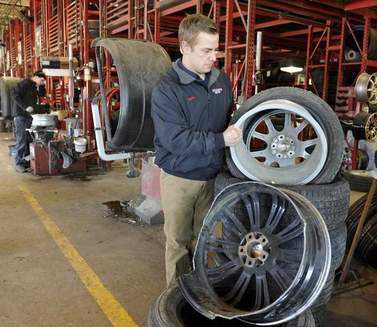 Michigan motorists bent out of shape by potholes, lack of reimbursement Lansing Drivers can file claims with state or local road agencies for blown tires, bent wheel rims and other damage in what already has become an especially nasty pothole season. But their chances of collecting are slim. Hundreds of claims filed with the state since 2010 have resulted in payouts totaling just over $3,300 to six motorists, according to the Michigan Department of Transportation. None of the 128 claims lodged between Oct. 1 and Feb. 14 has been paid, a department spokesman said. Motorists with pothole damage in Oakland County have fared a little better. Of 75 claims filed since Oct. 1, seven totaling $3,464 have been granted, said Road Commission for Oakland County spokesman Craig Bryson. The state takes responsibility for interstates and U.S.- and M-designated roadways; the counties are responsible for county roads. The situation promises to worsen as a result of the extreme freeze-thaw cycle of a frigid winter and continued underfunding of road repairs. Some drivers’ frustrations are boiling over. “We should be getting something better for all of the money we spend on the roads,” said Archie Fonville, 77, of Ecorse, who wrecked two tires on his 2006 BMW in a pothole encounter on Interstate 75 near Springwell. His November claim for $204.40 was rejected by the State Administrative Board. Fonville said he was headed to church when the pothole loomed ahead. He couldn’t change lanes because there was truck next to him. He filed a claim for just one tire, he said, because the other one was old. “I still feel I should be reimbursed in some kind of way,” Fonville said. Dr. Rudolph Demercurio, a Farmington Hills optometrist, said he feels fortunate to have collected $400 from the state for two blown tires on his Cadillac from a pothole in the same area of I-75 near Springwells on a Friday evening in February 2013. His claim initially was rejected, but approved on appeal. Demercurio said he was one of eight motorists with disabled vehicles waiting for wreckers along the interstate about 8 p.m. while State Police directed traffic around the pothole, which appeared to have been patched once and reopened. “You drive around in Ohio, you don’t see the type of potholes we have here,” Demercurio said. “I think it’s poor workmanship, or they just don’t allocate enough money to ever fix the roads.” Few claims eligible State law says state and local road agencies are liable only for damage from potholes that have gone 30 or more days without repair, or if negligence can be proved. It means drivers whose wheels slammed through jagged paving that appeared overnight or during the past few days are unlikely to be reimbursed. “State law requires that to prove a highway defect claim, the motorist must show that we failed to maintain the highway in reasonable repair,” said MDOT communications representative James Lake. “They must also show that MDOT knew of the condition and had an opportunity to repair it, or the condition existed for more than 30 days. “Few claims are eligible for payment because potholes form quickly, and when we become aware of them, we work quickly to repair them,” Lake said. “We don’t want vehicles to be damaged, or anyone to be hurt.” Of claims paid in the past few years, Lake said, the average claim was $555, with a low of $205.49 and a high of $999.99. The most common types of damage are blown tires, bent rims, damaged suspension or damaged steering, he said. The State Administrative Board, not MDOT, makes the final decision if a claim for less than $1,000 is rejected and the driver appeals. MDOT’s data show that in addition to the six claims paid since 2010, another 44 were rejected on appeal to the State Administrative Board, whose members are the governor, lieutenant governor, secretary of state, attorney general, state treasurer, superintendent of public instruction and transportation director. Drivers with damage exceeding $1,000 have to file complaints with the Michigan Court of Claims in Lansing. Other states handle pothole claims differently. In Ohio, drivers with damage worth $10,000 or less file with the Ohio Court of Claims. According to the Ohio Supreme Court’s news site, drivers must show the state highway department had been notified of a pothole and failed to repair it. The Ohio Court of Claims administrator decides if damages will be awarded after an 81-day process in which the highway department is allowed to file an investigative report and the motorist can reply to the report. If the claim is denied, the motorist can appeal to the claims court judge. The Illinois Department of Transportation requires “prior notice” and “an adequate length of time to remedy or repair the condition.” Road funds lacking The normal pothole season still is a couple of weeks away, but Michigan’s rugged roads already are taking a toll and creating business for tire and repair shops. “We have a whole stack of broken rims and split-open tires from our customers hitting potholes,” said Keith Fenwick, senior assistant manager at a Discount Tire store in Auburn Hills. Macomb County Executive Mark Hackel said drivers’ troubles with potholes are likely to grow because the Legislature hasn’t approved the funding necessary to fix roads as fast as they’re deteriorating. A Legislature-sponsored study in 2011 showed an investment of at least $1.2 billion more per year is needed now. “Roads are not getting funded properly year after year, and we’re still waiting for the Legislature to come up with a funding formula for it,” Hackel said. The 2011 study showed by early the next decade the state should be spending nearly $2.5 billion more per year for repairs on state roads — let alone local roads. Gov. Rick Snyder repeatedly has called for action on more infrastructure spending, but leaders in the House and Senate have said again this year it’s unlikely lawmakers will approve the necessary tax hikes or changes. At best, it appears they’ll use $200 million to $300 million of a nearly $1 billion state surplus to boost the road repair budget. The situation led Hackel in late January to make public a promise for prompt response to all calls received by the county dispatch center about pothole damage to vehicles. “We will get a crew out there and fill it within an hour, day or night,” Hackel said. “We’re not going to wait and put it on a list.” The Macomb County executive’s pledge is prompted in part by his own experience. Three weeks ago, he hit a pothole that wrecked a tire on his vehicle on 23 Mile near Interstate 94. Coincidentally, he said, it happened in front of a tire store. State pothole claim process Applicants for state reimbursement on pothole or “highway defect” claims must meet several criteria to qualify for payment: ■ The pothole must be located on a highway with an M, I or U.S. prefix. ■ The motorist must show the state failed to maintain the highway in reasonable repair. ■ The driver must show MDOT knew of the condition and had an opportunity to repair it, or the condition existed for more than 30 days. ■ Claims for less than $1,000 must be submitted to the MDOT regional office or transportation service center that covers the county where the incident occurred. If a claim is for $1,000 or more, it must be filed with the Michigan Court of Claims in Lansing. A claim form and instructions are available on the MDOT website at: http://www.michigan.gov/mdot/0,4616,7-151-9615_30883-93194--,00.html. Source: Michigan Department of Transportation How to report a pothole ■The Pothole Hotline is 888-296-4546. ■ “Report a Pothole” is the first link in the Michigan Department of Transportation’s Spotlight section at www.michigan.gov/mdot. ■196 state highway potholes have been reported to MDOT this year. Source: Michigan Department of Transportation From The Detroit News www.hub911.com 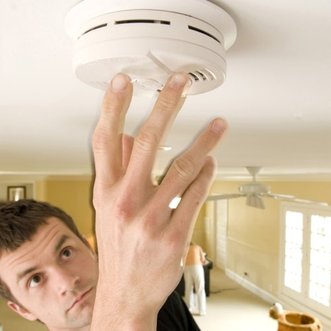 Smoke alarms & fire -- statisticsMost consumers don't think about a fire until one happens. As part of its commitment to educating the public on fire safety and prevention, UL asks consumers to think about fire now to minimize the risk of it happening later-and to minimize the risk of injury or death if one happens. Fire cause
(CNN) -- It could have had a much different outcome. A family of six spent two days in the Nevada wilderness in sub-zero temperatures after their Jeep rolled off the side of a dirt road and into a crevice.
James Glanton and his girlfriend Christina McIntee huddled with their two children, and her nephew and niece, keeping everyone together and keeping everyone warm. They suffered no frostbite. McIntee, 25, and the youngest child Chloe, 3, were released from Pershing General Hospital on Wednesday. Glanton and the other three children continued to receive IV hydration at the hospital. None were expected to face any long-term health problems. So how did this family manage to survive two days when others may not have been so lucky? Here are five things the family did right: Doc: Nevada family smart to stay by car Details of the Nevada rescue Rescued Nevada family in 'good spirits' 1) They told relatives where they were going Knowing where Glanton and McIntee were taking the kids was a huge help to authorities. It narrowed down the scope of the search. The Pershing County Sheriff's Office knew the family had planned to play in the snow in the Seven Troughs mountain range. Even knowing where the family was headed, the search area was still 6,000 square miles. Contrast their decision to that of Aron Ralston. In 2003, Ralston didn't tell anyone he was going hiking in a remote Utah canyon. He spent nearly a week with part of his right arm pinned under an 800-pound boulder. He made it out only after he amputated his forearm and hiked four hours. Had anyone known where he was, the outcome might have been different. 2) They didn't leave to go find help Survival expert Joseph Teti said this was key, sticking with the vehicle when you're in trouble. That's better than striking out on your own. "Mother Nature will not allow you to make too many mistakes at all," said Teti, co-star of Discovery Channel's "Dual Survival." In 2011, Canadians Albert and Rita Chretien were lost in a very remote section of the Nevada wilderness. They said their GPS took them the wrong way. After a few days, Albert went looking for help. He died. Wife Rita was found alive by a search team some 49 days later. 3) They were prepared for the elements The family planned a romp in the snow. So they packed heavy winter clothing. As a result, they were ready for their unintended outdoor adventure. The experts say it's best to be prepared for the elements you're traveling in even if you're not planning on being outside for any length of time. 4) They improvised to stay warm This really impressed authorities. The couple, who didn't have extra blankets, started a fire outside after the Jeep overturned. They heated rocks and placed them in the spare tire to keep the children, ages 3 to 10, warm at night. "I have never heard of such a thing, but I think it was pretty clever of him," search team leader Paul Burke with state Department of Public Safety, said of Glanton's tactics. "To the extent he was ingenious about it, that is one for the books." 5) They had food and water Dr. Vacek said having basic supplies proved to be key, especially having water so they could stay hydrated in the dry conditions. The food didn't last long, it was gone by Monday, but still it was enough to get them by until help came.
1. Christmas Tree Fires Uncommon But Deadly
Tree fires are rare but unusually dangerous in the home, the National Fire Protection Association said. U.S. fire departments responded to an average of 230 tree-related fires a year between 2006 and 2013, the NFPA said. However, 1 out of 63 tree fires resulted in death as compared to 1 death out of 144 total home structure fires. Picking a tree with fresh, green needles that do not fall off when touched is an important step in the tree care process, the NFPA said. Make sure the tree is at least 3 feet from any heat source, such as candles, fireplaces and radiators. Members of the Kansas Christmas Tree Growers Association and other vendors sell as many as 34,000 trees during the Christmas season, association president Eldon Clawson said. An extended drought has been gripping Kansas, but it has not affected the Kansas Christmas tree industry. "This year we have had adequate moisture at very important times," Clawson said. "We have gone into the fall with some subsoil moisture making its way to the deep roots of the trees. Therefore, the needles (green part we see) are green and fresh, making for a hardy looking tree." The standard tree care tips apply for all trees, whether they come from a drought-affected area or not. "Just use the standard measures such as keeping the tree well watered as it sits in the tree stand," he said. "Don't place a tree near a heat source." 2. Falls Common During Holidays More than 6,000 people are treated in hospital emergency rooms every year due to holiday-decorating falls, the U.S. Centers for Disease Control and Prevention said. Nearly 50 percent of the holiday falls were from ladders while decorating outside, the CDC said. Falls were also reported as a result of people falling off furniture while doing indoor decorating. Use the "buddy system" when using a ladder or climbing on a roof with an adult holding the ladder steady on the ground, the American College of Emergency Physicians said. Move the ladder if you need to reach out to the right of left and never stand on the top two rungs of the ladder. 3. Pet-Safe Holiday Starts with Plants, Decorations One of the great myths of the holiday surround poinsettias and whether they are dangerous or even deadly. Despite that myth, poinsettias are not deadly, Dr. Tina Wismer of the Animal Poison Control Center for the American Society for the Prevention and Cruelty of Animals (ASPCA) said. They can cause mild vomiting and drooling for pets, but they are not highly toxic, Wismer said. Mistletoe and holly can actually cause more problems. "Mistletoe can cause vomiting, diarrhea and heart problems, while holly can cause severe gastrointestinal signs," Wismer said. "Fortunately, both of these plants are not tasty, and dogs and cats usually only ingest a small amount. They are much more dangerous for grazing animals like horses or cattle." Christmas tree decorators should also take care to keep their trees safe for pets. Some animals are attracted to shiny things; this is especially true for the felines in the household. "It is always a good idea to keep tinsel away from pets. If swallowed, tinsel could pose a serious risk for choking or intestinal obstruction," she said. "Non-breakable ornaments should be used on the tree until you can get assurance that your cat or dog will not try to climb or knock over the tree and try to eat or chew on them." 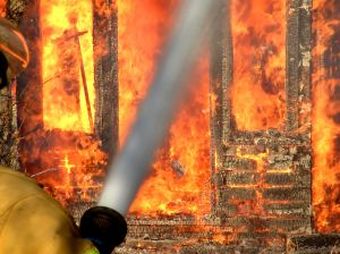 The high cost of home heating fuels and utilities have caused many Americans to search for alternate sources of home heating. The use of woodburning stoves is growing and space heaters are selling rapidly, or coming out of storage. Fireplaces are burning wood and manmade logs. All these methods of heating may be acceptable. They are, however, a major contributing factor in residential fires. Many of these fires can be prevented. The following fire safety tips can help you maintain a fire safe home this winter. Kerosene Heaters ØBe sure that kerosene heaters are legal in your area. ØBe sure your heater is in good working condition. ØInspect exhaust parts for carbon buildup. Be sure the heater has an emergency shut off in case the heater is tipped over. ØNever use fuel burning appliances without proper room venting. Burning fuel (coal, kerosene, or propane, for example) can produce deadly fumes. ØUse ONLY the fuel recommended by the heater manufacturer. NEVER introduce a fuel into a unit not designed for that type fuel. ØKeep kerosene, or other flammable liquids stored in approved metal containers, in well ventilated storage areas, outside of the house. ØNever fill the heater while it is operating or hot. When refueling an oil or kerosene unit, avoid overfilling. ØRefueling should be done outside of the home (or outdoors). Keep young children away from space heaters—especially when they are wearing night gowns or other loose clothing that can be easily ignited. ØWhen using a fuel burning appliance in the bedroom, be sure there is proper ventilation to prevent a buildup of carbon monoxide. Wood Stoves And Fireplaces Wood stoves and fireplaces are becoming a very common heat source in homes. Careful attention to safety can minimize their fire hazard. To use them safely: ØBe sure the fireplace or stove is installed properly. Wood stoves should have adequate clearance (36”) from combustible surfaces and proper floor support and protection. ØWood stoves should be of good quality, solid construction and design, and should be laboratory tested. ØHave the chimney inspected annually and cleaned if necessary, especially if it has not been used for some time. ØDo not use flammable liquids to start or accelerate any fire. ØKeep a glass or metal screen in front of the fireplace opening, to prevent embers or sparks from jumping out, unwanted material from going in, and help prevent the possibility of burns to occupants. ØThe stove should be burned hot twice a day for 15-30 minutes to reduce the amount of creosote buildup. ØDon’t use excessive amounts of paper to build roaring fires in fireplaces. It is possible to ignite creosote in the chimney by overbuilding the fire. ØNever burn charcoal indoors. Burning charcoal can give off lethal amounts of carbon monoxide. ØKeep flammable materials away from your fireplace mantel. A spark from the fireplace could easily ignite theses materials. ØBefore you go to sleep, be sure your fireplace fire is out. NEVER close your damper with hot ashes in the fireplace. A closed damper will help the fire to heat up again and will force toxic carbon monoxide into the house. ØIf synthetic logs are used, follow the directions on the package. NEVER break a synthetic log apart to quicken the fire or use more than one log at a time. They often burn unevenly, releasing higher levels of carbon monoxide. Furnace Heating ØIt is important that you have your furnace inspected to ensure that it is in good working condition. ØBe sure all furnace controls and emergency shutoffs are in proper working condition. ØLeave furnace repairs to qualified specialists. Do not attempt repairs yourself unless you are qualified. Inspect the walls and ceiling near the furnace and along the chimney line. If the wall is hot or discolored, additional pipe insulation or clearance may be required. ØCheck the flue pipe and pipe seams. Are they well supported and free of holes and cracks? Soot along or around seams may be an indicator of a leak. ØIs the chimney solid, with cracks or loose bricks? All unused flue openings should be sealed with solid masonry. ØKeep trash and other combustibles away from the heating system. Other Fire Safety Tips ØNever discard hot ashes inside or near the home. Place them in a metal container outside and well away from the house. ØNever use a range or an oven as a supplemental heating device. Not only is it a safety hazard, it can be a source of potentially toxic fumes. ØIf you use an electric heater, be sure not to overload the circuit. Only use extension cords which have the necessary rating to carry an amp load. TIP: Choose an extension cord the same size or larger than the appliance electrical cord. ØAvoid using electrical space heaters in bathrooms or other areas where they may come in contact with water. ØFrozen water pipes? Never try to thaw them with a blow torch or other open flame, otherwise the pipe could conduct the heat and ignite the wall structure inside the wall space. Use hot water or a laboratory tested device such as a hand held dryer for thawing. ØIf windows are used as emergency exits in your home, practice using them in the event fire should strike. Be sure that all the windows open easily. Home escape ladders are recommended. ØIf there is a fire hydrant near your home you can assist the fire department by keeping the hydrant clear of snow so in the event it is needed, it can be located. FINALLY... ØBe sure every level of your home has a working smoke alarm, and be sure to check and clean it on a monthly basis. ØPlan and practice a home escape plan with your family. ØContact your local fire department for advice if you have a question on home fire safety. For more information or copies of this publication, please contact: Department of Homeland Security • U.S. Fire Administration 16825 South Seton Avenue • Emmitsburg, Maryland 21727 800-561-3356 • www.usfa.dhs.gov FA-249F/March 2008  I recently began selling again on ebay. In the course of three days, I have been met with 2 scams. The first is from a lady who bought an item for $0.99 and flat rate shipping of $10. I added in some 'freebies' as a thank you. She has now accused me of increasing the shipping weight by adding the freebies. Understand, this was flat rate shipping & it actually cost me $12 to ship. Now she is holding her 'rating' hostage, until I tell her not to pay for it. The second is much worse. I sold a turbo for $800. The buyer had no previous buying experience on ebay. He has now placed the transaction through Paypal on hold. He states that he didn't receive the item as described. In both cases I fear I will lose. The first is only out $11, the second I cannot afford. ebay is siding with the buyers in both cases. This is a clear case of the tail wagging the dog. I am venting but I am also using this to warn everyone out there about the dangers of selling on ebay. Here is an excerpt from another blog by Joel Lee: The Scam: In this Ebay scam, everything goes according to plan. You put up an item for sale, a buyer bids on it (or Buys It Now if you allowed it), you receive payment, you send the item, done! However, before he bought your item, he also bought a broken version of the same exact item. They use this to blackmail you into giving them a full refund or else they’ll report you to eBay. How It Gets You: When something like this happens, it’s easy to feel helpless. You feel like they outsmarted you, you have no evidence that your item was functional, you can’t prove that they’re lying. In order to mitigate your losses, you agree to the full refund and move on while the scammer just got a free item from you. How to Avoid It: Sadly, this scam is a little harder to avoid. You have two options. One, you can require your buyers to purchase shipping insurance to protect yourself against this kind of thing. Two, you can state on your eBay listings that there are NO REFUNDS on your items. (You can read more here: http://www.makeuseof.com/tag/5-ebay-scams-to-be-aware-of/  Fix Your Credit NOW! Don’ t be embarrassed, stressed or scared - everyone can use help with their credit score. The better your credit score brings about lower interest rates on loans and credit cards. The same holds true for auto insurance and obtaining an apartment. Even car & recreational vehicles have lower payments for good credit. Fixing bad credit can help you:
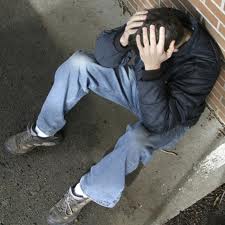 You can always try yourself, but Buyers Assistance can get it done faster and RIGHT the first time.It can be frustrating and time consuming to fix credit. If it isn't done right, it may cause more damage to your credit report. Buyers Assistance was started by people with many years in the credit & business sector. They began this company with a vision to help you, the average consumer.You can call them, or visit their website at www.buyersassistance.net They will help you through every step of the process. 877-303-7899 Toll Free 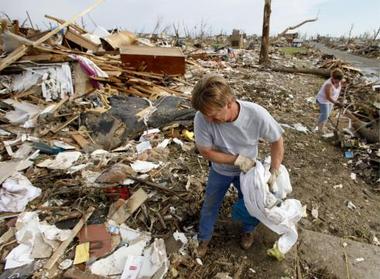 In addition to the physical and emotional impact of a disaster, you may also face financial challenges in the days, weeks and even months or years ahead. Of course, ensuring your family’s physical safety is your first priority. Afterward, you can begin to take these practical steps to recover your financial well-being. Insurance Claims Contact your insurance agent, broker or insurance company as soon as you can to report how, when and where the damage occurred. Provide a general description of the damage. Prepare a list of damaged or lost items and provide receipts if possible. Consider photographing or videotaping the damage where it occurred for further documentation to support your claim. If possible, keep damaged items or portions of those items until the claims adjuster has visited your home. Do not throw away anything you plan to claim without discussing it with your adjuster first. Keep receipts for all additional expenses that you may incur such as lodging, repairs or other supplies. Make copies of all documents and pictures given to your claims adjuster or insurance company. Besides insurance, there are many questions related to taxes, expenses and determining just how you will recover from a personal financial point of view. Cash Flow, Bills and Debt Stop unnecessary expenses. For example, if your home is temporarily uninhabitable or totally destroyed, notify the utility company and other service companies, such as the phone company, so they can stop billing immediately. Estimate the amount of income and emergency savings you have to pay bills while you recover from the disaster, then prioritize your bills. Paying your insurance premiums and rent or mortgage should be your top priority. Call any creditors and ask for more time to pay. Most creditors will be willing to work with you, especially if you notify them before a payment is due. Replacing Vital Documents Lost in the Disaster Driver's License Department of Motor Vehicles Government Issued ID Contact the issuing authority Insurance Policies Your insurance agent or company Military Discharge Department of Veterans Affairs, Papers 1-800-827-1000 or TDD/TTY 1-800-829-4833 Passports State Department—Passport Services 202-955-0430 (24 hours) Birth, Death, Marriage and Certificates Bureau of Records in the appropriate state Social Security or Medicare Cards Local Social Security office 1-800-772-1213 or TDD/TTY 1-800-325-0778 Credit Cards The issuing financial institution, as soon as possible Titles to Deeds Records department of the area in which the property is located Stocks and Bonds Issuing company or your broker Wills Your attorney Income Tax Record The IRS center where filed, your accountant or 1-800-829-1040 Citizenship Papers Bureau of Citizenship and Immigration Services, 1-800-375-5283 Mortgage Papers Lending Institution Article from The American Red Cross |
PSA from Hub911
Information to know Archives
January 2017
|
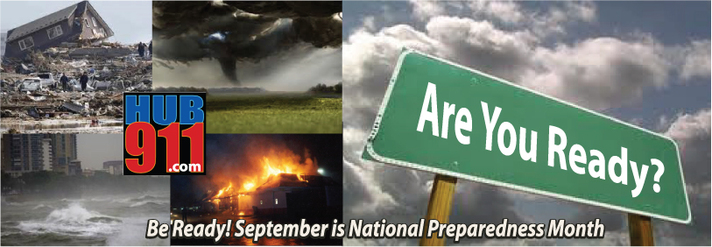
 RSS Feed
RSS Feed
